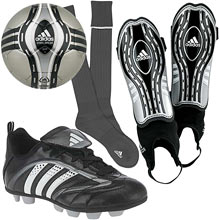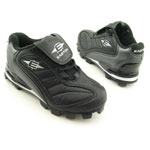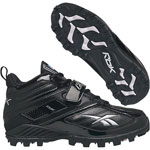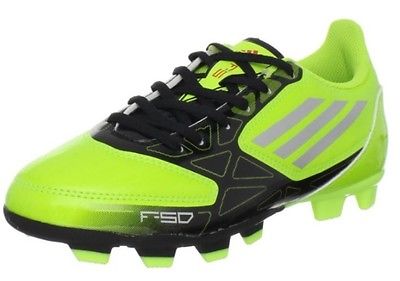Youth Soccer Equipment

The youth soccer equipment your child needs to play soccer. To participate in soccer we recommend the following soccer gear.
Soccer requires the simplest of gear, however, the equipment can be quite confusing if your new to the game. hopefully, this page will give you a solid foundation on the soccer gear your youth needs to play.
|
Soccer Socks: |
Shin Guards: |
 |
 |
Youth Soccer Equipment: Cleats
The cleats above are baseball and American football cleats. They are completely different than soccer cleats in many ways. The most important being functionality. These cleats aren't made to make contact with ball only to keep traction on the field. One thing you need to consider is what season your playing and what the fields are like. Turf fields don't need big cleats. Turf shoes would almost be better. If you are playing in the summer and fall dry season the grass may be dirt hard. Again, smaller more turf like cleats may actually be better for the player. Use your judgement on what type of cleats your player needs but don't feel like you need to purchase them right away. As long as the footwear is comfortable, secure, and not rubber toes yo are fine.
 |
The pair of cleats to the left are true soccer cleats. simple with molded cleats made from leather or synthetic leather. The other two are football and baseball cleats. I have seen many kids come out to to the field with baseball or football cleats and I cringe because every time they kick it's with their toe. The reason they use their toe is because both football and baseball cleats are bulky and have studs at the toe with extra leather covering. This facilitates toe kicking and does not allow the child to fully point the toe down. The soccer cleat is narrow almost pointy at the toe. With football and baseball cleats there is a bigger kick with the toe and facilitates a very bad habit! So please make sure to get some simple soccer cleats. Shoes or sneakers with rubber toes will prevent your child from getting touch on the ball and will facilitate toe kicking. If you don't have proper equipment make sure the shoes are not heavy at the toe. |
Good tips for buying gear
Here are some tips for you when buying youth soccer equipment.
1. Don't be price driven. I have purchased $100 cleats and they have been garbage. Go with is affordable. If you player enjoys soccer they will be wanting more expensive ones later.
2. Width matters with cleats. Make sure the cleats are comfortable and fit the width of the foot. If they don't fit well, the player will not perform. It's almost better to where active shoes that fit better.
3. Shinguards are not made that well. Cut the shinguards from any straps or ankle protection straps and use long socks to keep in place. You can purchase ankle straps or use tape to keep the shinguards in place so they don't fall into the foot.
4. If your child has a bad habit of putting their hands in pockets make sure the shorts don't have any. This makes things easier for the coach.